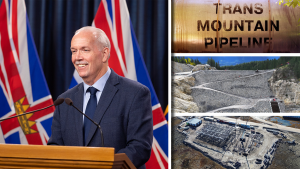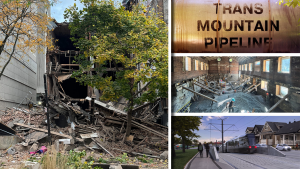Construction stakeholders are calling the latest round of reforms to Canada’s Express Entry system important measures that will help employers find the workers they need during a period of severe workforce shortages.
On May 31 federal Minister of Immigration, Refugees and Citizenship Sean Fraser announced the launch of a new category-based selection process for Express Entry immigration, enabling the targeted invitation of applicants with work experience in such construction trades as carpenters, plumbers and electricians. Other categories in this first year of the new system are workers with strong French-language skills, workers in the STEM professions and health care workers.
“We strongly believe that this is a step forward,” said Victoria Mancinelli, LIUNA’s director of strategic partnerships. “It finally recognizes skilled trades as talent for entry, and it will assist in streamlining this talent to in-demand careers in the industry.”
Sean Strickland, executive director of Canada’s Building Trades Unions (CBTU), commented, “We have been advocating for the minister to provide more flexibility and specificity in the Express Entry program to get more construction workers into the country, so this is a good step forward.
“We’re heading in the right direction.”
A year ago the federal government announced revamps to the Immigration and Refugee Protection Act to allow for the selection of immigrants based on “key attributes that support economic priorities, such as specific work experience,” explained a statement.
The minister was required to consult with key stakeholders prior to establishing a new category.
The May 31 announcement is said to reflect those consultations on needs for the upcoming year.
Strickland suggested Express Entry is a “workaround” system that provides a stream of workers in the absence of reforms to the more inflexible point system, which fails to deliver enough skilled trades workers.
“That is a good way to work within the system to get the people that we need. So we’re happy with that,” he said of the new categories system.
While welcome, Strickland said the CBTU is still advocating for further flexibility in how unions are recognized within the system.
“The next step that we need from the government is that we need to find a way that our unions in collaboration with our employers are recognized as an entity that can provide a job offer,” he said. “We have to change that language in order for us to fully utilize this Express Entry system.”
Fraser stated in making the announcement, “Everywhere I go, I’ve heard loud and clear from employers across the country who are experiencing chronic labour shortages. These changes to the Express Entry system will ensure that they have the skilled workers they need to grow and succeed.”
The immigration ministry said further details on the timing of invitations for individual categories and how to apply will be announced in coming weeks.
Mancinelli said the program will require collaborative efforts from labour and industry partners to move it forward without delay.
She noted, “Through an internal study conducted by LIUNA with local unions across the province we have determined our sectors who are seeing larger labour shortages and are confident that the Express Entry program will help fill this gap and boost our workforce and the economy.”
The Mechanical Contractors Association of Canada issued a statement saying it was pleased with Fraser’s announcement, with MCAC chair Derek Ermen stating, “We look forward to working closely with the department as we supplement our domestic training capacity with the permanent skilled workers we need from abroad, enabling us to respond to the future construction demands of the country.”
Nadia Todorova, executive director of the Residential and Civil Construction Alliance of Ontario, also said the development was a step in the right direction but lamented, “Our biggest barrier has not been addressed yet — the inherent bias that our current immigration system has, which does not value practical, on-the-job experience.
“It is imperative that there be a level of recognition for the skills that our workers have, and for those skills to be equally valued in the immigration process,” stated Todorova.
Strickland said the CBTU will continue to advocate for reforms to the Temporary Foreign Workers program and noted there had been positive developments on a fourth immigration pathway for construction workers, the provincial Immigrant Nominee Program.
In March, the Ontario government said it will be doubling the number of economic immigrants it selects in 2025 to over 18,000 following negotiations with the federal government. The previous allocation was 9,750 immigrants. The province received 3,900 skilled trades workers in 2022.











Recent Comments
comments for this post are closed